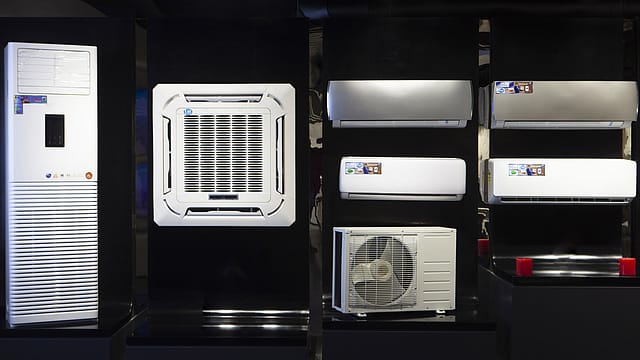Hot summer to boost AC sales; volumes to grow 15-20% in FY24
ADVERTISEMENT

Volumes of the room air conditioner industry will expand 15-20% in 2023-24, aided by an underpenetrated market and expected harsh summers this year, according to estimates shared by ICRA.
The government's Production Linked Incentive (PLI) scheme has received a strong response with a committed capital outlay of ₹4,806 crore from both global as well as domestic room air conditioner companies, which will help reduce imports and support industry margins through backward integration, the ratings agency says.
"The industry has significant growth potential considering its low penetration of 7-9% of total urban Indian households, compared to 90% in developed countries," says Sheetal Sharad, vice-president and sector head – Corporate Ratings, ICRA.
Increasing urbanisation, growing disposable income, improving consumer finance availability and increasing room air conditioners per household are further expected to support the volume, as well as revenue growth, Sharad adds.
ICRA estimates the domestic room air conditioner market at 6.4-6.8 million units in terms of volume and ₹17,000-18,000 crore by value in FY22, having recovered from the pandemic-induced low of FY21. In FY23, the industry witnessed significant improvement in sales volume owing to an elongated and intense summer season along with pent-up demand, according to the ratings agency.
December 2025
The annual Fortune 500 India list, the definitive compendium of corporate performance, is out. This year, the cumulative revenue of the Fortune 500 India companies has breached $2 trillion for the first time. Plus, find out which are the Best B-schools in India.
With increasing room air conditioner usage and consequently growing electricity expenses, companies are launching more models in the 4- and 5-star higher energy efficiency categories owing to shifting consumer demand towards these energy-efficient models, says Sharad.
Consumer preference for these categories is rising, though 3-star continues to dominate the market owing to a good balance between price and energy savings, ICRA says.
Split AC models, which are more compact and energy efficient, continue to dominate the market. "RACs with inverter technology are also likely to witness relatively higher growth over traditional RACs due to better energy efficiency and a reduced price difference," the ratings agency says.
The cumulative share by volume of 4- and 5-star inverter room air conditioners is expected to increase to 30-40% in FY25 from 20-23% in FY22.
Room air conditioner manufacturers are heavily dependent on imports for critical components. The central government's PLI scheme for the AC segment, which offers incentives of ₹6,238 crore to manufacturers, has garnered an encouraging response. The rating agency believes that over the medium to long term, this will enable capacity addition, reduce import dependence from the current levels of 60-70% to 20-30% and provide impetus to AC exports in the long run.
Currently, room air conditioner manufacturers in India have only 30-40% localisation levels. Key components like compressors, controllers, motors, fans, heat exchanger coils and PCBs are imported from China, Thailand and Malaysia.
AC manufacturers have been facing input cost pressures since the beginning of FY22 given the elevated prices for commodities like copper and aluminium and high import dependence. "Adverse forex fluctuations impacted the cost structures of players. Consequently, the industry had to pass on the cost increases through multiple price hikes in FY22. In FY23, with softening of commodity prices, these cost pressures are estimated to have moderated to an extent," the ratings agency says.
